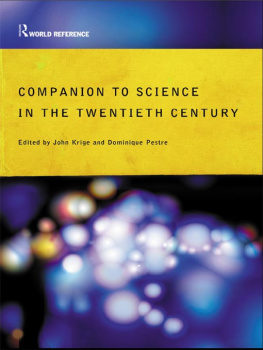First published 1994
by Routledge
2 Park Square, Milton Park, Abingdon, Oxon OX14 4RN
Simultaneously published in the USA and Canada
by Routledge
605 Third Avenue, New York, NY 10017
First published in paperback 1997
Routledge is an imprint of the Taylor & Francis Group, an iriforma business
Structure and editorial matter 1994 Tim Ingold
The chapters 1994 Routledge
All rights reserved. No part of this book may be reprinted or reproduced or utilised in any form or by any electronic, mechanical, or other means, now known or hereafter invented, including photocopying and recording, or in any information storage or retrieval system, without permission in writing from the publishers.
Notice:
Product or corporate names may be trademarks or registered trademarks, and are used only for identification and explanation without intent to infringe.
Typeset in 10/12pt Ehrhardt, Compugraphic by MCS Ltd, Salisbury
British Library Cataloguing in Publication Data
A catalogue record for this book is available from the British Library
Library of Congress Cataloguing in Publication Data
A catalogue record for this book is available from the Library of Congress
ISBN 13: 978-0-415-16421-4 (pbk)
ISBN 13: 978-0-415-02137-1 (hbk)
DOI: 10.4324/9781003209263
CONTENTS
Tim Ingold
1. Introduction to humanity
Tim Ingold
2. Humanity and animality
Tim Ingold
3. The evolution of early hominids
Phillip V. Tobias
4. Human evolution: the last one million years
Clive Gamble
5. The origins and evolution of language
Philip Lieberman
6. Tools and tool behaviour
Thomas Wynn
7. Niche construction, evolution and culture
F. J. Odling-Smee
8. Modes of subsistence: hunting and gathering to agriculture and pastoralism
Roy Ellen
9. The diet and nutrition of human populations
Igor de Garine
10. Demographic expansion: causes and consequences
Mark N. Cohen
11. Disease and the destruction of indigenous populations
Stephen J. Kunitz
PART II: CULTURE
12. Introduction to culture
Tim Ingold
13. Why animals have neither culture nor history
David Premack and Ann James Premack
14. Symbolism: the foundation of culture
Mary LeCron Foster
15. Artefacts and the meaning of things
Daniel Miller
16. Technology
Franois Sigaut
17. Spatial organization and the built environment
Amos Rapoport
18. Perceptions of time
Barbara Adam
19. Aspects of literacy
Brian V. Street and Niko Besnier
20. Magic, religion and the rationality of belief
Gilbert Lewis
21. Myth and metaphor
James F. Weiner
22. Ritual and performance
Richard Schechner
23. The anthropology of art
Howard Morphy
24. Music and dance
Anthony Seeger
25. The politics of culture: ethnicity and nationalism
Anthony D. Smith
PART III: SOCIAL LIFE
26. Introduction to social life
Tim Ingold
27. Sociality among humans and non-human animals
R. I. M. Dunbar
28. Rules and prohibitions: the form and content of human kinship
Alan Barnard
29. Understanding sex and gender
Henrietta L. Moore
30. Socialization, enculturation and the development of personal identity
Fitz John Porter Poole
31. Social aspects of language use
Jean DeBernardi
32. Work, the division of labour and co-operation
Sutti Ortiz
33. Exchange and reciprocity
C. A. Gregory
34. Political domination and social evolution
Timothy Earle
35. Law and dispute processes
Simon Roberts
36. Collective violence and common security
Robert A. Rubinstein
37. Inequality and equality
Andre Beteille
38. The nation state, colonial expansion and the contemporary world order
Peter Worsley
- 1. Introduction to humanity
- 2. Humanity and animality
- 3. The evolution of early hominids
- 4. Human evolution: the last one million years
- 5. The origins and evolution of language
- 6. Tools and tool behaviour
- 7. Niche construction, evolution and culture
- 8. Modes of subsistence: hunting and gathering to agriculture and pastoralism
- 9. The diet and nutrition of human populations
- 10. Demographic expansion: causes and consequences
- 11. Disease and the destruction of indigenous populations
- Part II: Culture
- 12. Introduction to culture
- 13. Why animals have neither culture nor history
- 14. Symbolism: the foundation of culture
- 15. Artefacts and the meaning of things
- 16. Technology
- 17. Spatial organization and the built environment
- 18. Perceptions of time
- 19. Aspects of literacy
- 20. Magic, religion and the rationality of belief
- 21. Myth and metaphor
- 22. Ritual and performance
- 23. The anthropology of art
- 24. Music and dance
- 25. The politics of culture: ethnicity and nationalism
- Part III: Social Life
- 26. Introduction to social life
- 27. Sociality among humans and non-human animals
- 28. Rules and prohibitions: the form and content of human kinship
- 29. Understanding sex and gender
- 30. Socialization, enculturation and the development of personal identity
- 31. Social aspects of language use
- 32. Work, the division of labour and co-operation
- 33. Exchange and reciprocity
- 34. Political domination and social evolution
- 35. Law and dispute processes
- 36. Collective violence and common security
- 37. Inequality and equality
- 38. The nation state, colonial expansion and the contemporary world order
Guide
PREFACE
This volume started life on the initiative of Jonathan Price, at that time Reference Books Editor at Croom Helm. His idea was for an Encyclopedia of Human Society whose subject would span the disciplines of anthropology, sociology and archaeology. We first met to discuss the project in August 1986, and it was then that he charmed me into agreeing to become the volumes editor. It has been a big job, to put it mildly. In hindsight, it seems to me that I must have been mad to take it on at all, let alone single-handed. No doubt my motives were in part honourable, since I was strongly committed to the idea of anthropology as a bridging discipline, capable of spanning the many divisions of the human sciences. I wanted to prove that the possibility of synthesis existed not just as an ideal, but as something that could be realized in practice. No doubt, too, I was motivated by a certain vanity: if a synthesis was to be built, I wanted to be the one to build it, and to reap the credit! Seven years on, I am both older and perhaps a little wiser no less committed to the ideal of synthesis, but a great deal more aware of the complexities involved, and rather less confident about my own abilities to bring it about.




![Mark J. P. Wolf (editor) - Encyclopedia of Video Games: The Culture, Technology, and Art of Gaming [3 volumes]](/uploads/posts/book/279290/thumbs/mark-j-p-wolf-editor-encyclopedia-of-video.jpg)





